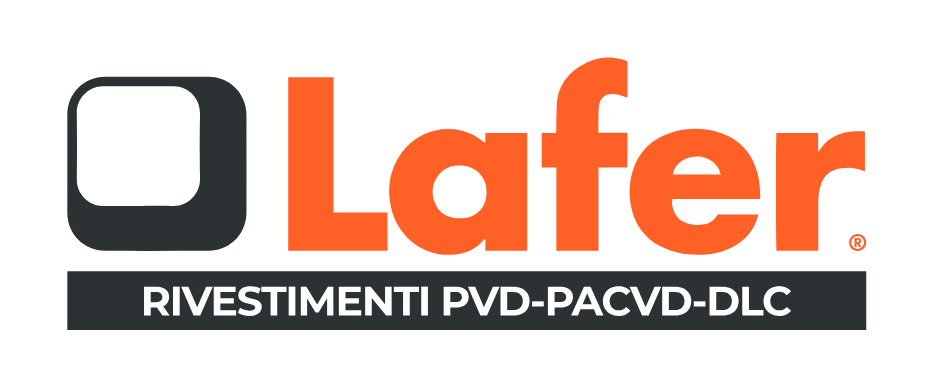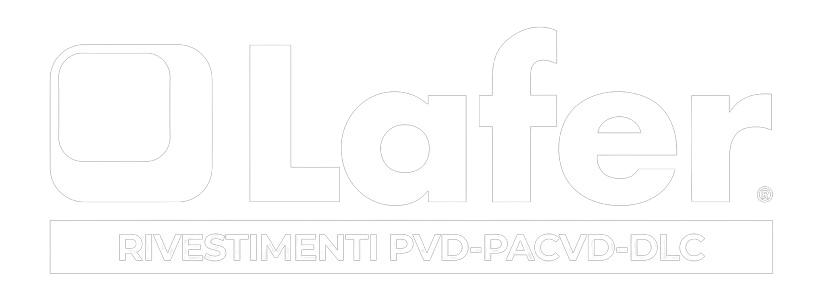Index
- PVD Treatment Process
- Advantages of PVD Treatment
- Fields of Application for PVD Treatments
- Biocompatibility Characteristics
1. PVD Treatment Process
The most common PVD treatment techniques can be divided into two main processes: those with a solid source, such as in the case of cathodic depositions (sputtering and arc), and those with a molten source (thermal evaporation and electron beam).
Sputter Coating
Sputtering is a PVD coating process in which a metallic material to be deposited (cathode) is bombarded with a beam of energetic particles (typically ions). This causes the atoms of the target material to be ejected or sputtered from the surface (cathodic sputtering) and then deposited onto the substrate (anode) to be coated.
Arc Evaporation
In the arc evaporation process, the evaporation of the material to be deposited is produced by an electric discharge directed at the target. A high-current, low-voltage arc is used to vaporize a cathode made of the material to be deposited.
Thermal Evaporation
In thermal evaporation, the material to be deposited is heated and brought to sublimation or evaporation. The material is placed inside a metal crucible with a high melting point, heated by a strong electric current or radiant system. This process is often used to coat materials that may be sensitive to other processes (such as ion beams) or for applications that require a high degree of control over the coating process.
Electron Beam Evaporation
Electron beam evaporation is a PVD coating process in which a focused beam of electrons is used to heat and evaporate the source material. The vapor is then deposited onto the substrate, forming a coating.
Materials Suitable for Treatment
PVD treatment is suitable for a wide range of materials, primarily metals, which serve as the substrate. Among the most common metals that can be coated using the PVD process are titanium alloys, stainless steel, and hard metals. Quenched and tempered steels, hot-work tool steels, nitridable steels, high-speed steels, construction steels, and various metals (iron, copper alloys, aluminum alloys, chromium alloys, nickel alloys, and cast iron) are also commonly used.
The choice of material on which the coatings are deposited is crucial for the success of the process. The coating must be supported by the substrate to ensure an effective coating.
Titanium
Titanium is widely used in PVD treatment because it is lightweight and highly resistant to corrosion. It is often applied in industries where strength and durability are required, such as aerospace and medical sectors.
Stainless Steel
Stainless steel is a common material that can be coated using the PVD process. It is known for its high corrosion resistance, and PVD coatings can further enhance this performance. Stainless steel is often used in industries where hygiene and cleanliness are of utmost importance, such as the food and beverage industry.
Tungsten
Tungsten is a metal valued for its high melting point and, therefore, its resistance to high temperatures. It is often used in applications that require resistance to extreme temperatures. PVD coatings can help protect tungsten from corrosion and wear, while also enhancing its aesthetic appearance.
Deposited Materials
PVD coating, especially in the arc process variant, is commonly made using the following materials:
- Zirconium Nitride (ZrN): This PVD coating is widely recognized in the decorative field for its straw-yellow coloration. Its main characteristics include high hardness, a low coefficient of friction, and high chemical inertness. Additionally, Zirconium Nitride complies with ISO 10993 (biocompatibility) and FDA (Food and Drug Administration) standards.
- Titanium Nitride (TiN): This PVD coating has been on the market for many years and is still considered of fundamental importance. TiN has long been a benchmark in chip removal, in automatic machine components, and has garnered significant interest in numerous other application fields such as the medical field (non-toxic surface finish in prosthetics). It complies with ISO 10993 (biocompatibility) and FDA (Food and Drug Administration) standards.
- Titanium Carbonitride (TiCN): This coating is an evolution of TiN, inheriting its already appreciated qualities and improving certain characteristics, such as greater hardness, which is 50% higher than TiN, ensuring greater wear resistance. TiCN complies with FDA (Food and Drug Administration) standards and is therefore biocompatible.
- Chromium Nitride (CrN): This PVD coating offers excellent corrosion resistance, creating an outstanding barrier against chemical aggression and oxidation. The low coefficient of friction of this coating helps reduce abrasion between moving surfaces.
2. Advantages of PVD Treatment
PVD treatment offers a range of properties and resulting production advantages:
Improved Durability of Materials or Components
PVD coatings provide high hardness and general wear resistance, ensuring greater durability of the treated material or components, even under intense use and mechanical stress. This results in increased productivity.
Abrasion Resistance
Thanks to their high hardness, PVD coatings offer significant abrasion resistance, making them ideal for surfaces subjected to intensive use and components in relative motion.
Resistance to UV Rays, Solvents, and Corrosion
PVD coatings provide excellent protection against the harmful effects of UV rays, increasing the lifespan of the coated material.
Wide Range of Colors
PVD coatings also serve a decorative function, allowing for a wide selection of colors, including gold, silver, nickel, gunmetal black, and many other finishes (satin, matte, etc.).
3. Fields of Application for PVD Treatments
PVD treatment finds application in various sectors due to its properties and advantages.
Automotive Industry
In the automotive industry, PVD coating is commonly used to enhance the durability and performance of various car parts. For example, pistons and camshafts coated with PVD benefit from increased wear resistance and reduced friction.
Mechanical Engineering
In the mechanical engineering industry, PVD coating is used to enhance the wear and abrasion resistance of components and tools. For example, cutting tools coated with PVD have a longer lifespan and require less sharpening. Additionally, PVD coating can be applied to machinery parts to improve their performance and resistance to corrosive agents.
Electronic
In the electronics industry, PVD coating is used to provide a protective barrier on components and circuits. This helps to prevent corrosion, wear, and abrasion, prolonging the lifespan and reliability of electronic devices. Additionally, PVD coating can enhance the conductive and thermal properties of electronic components, optimizing performance.
Aerospace
In the aerospace sector, PVD coating finds wide application due to its wear resistance, corrosion resistance, and high-temperature durability. Components and parts coated with PVD can withstand extreme conditions and have a longer lifespan.
Optics
In the optics sector, PVD coating is used to enhance the properties of lenses, such as scratch resistance, reflectivity, and light transmission. Anti-reflective, mirror, and colored coatings are just a few examples of PVD coating applications in optics.
Marine Industry
In the marine industry, PVD coating is used to protect surfaces exposed to the marine environment, such as stainless steel parts, from corrosion and wear. Additionally, PVD coating can provide an attractive aesthetic finish to marine components and accessories.
Treatments for the Food & Beverage Industry
In the food and beverage industry, PVD coating is used to enhance the wear and corrosion resistance of equipment and tools used in production, such as knife blades, containers, and machinery components. Additionally, PVD coating can be applied to ensure compliance with hygiene regulations and to prevent product contamination.
4. Ecofriendly
PVD treatments have several eco-friendly characteristics that make them a sustainable choice from an environmental perspective.
One of the main advantages is that PVD coating processes do not generate emissions of harmful chemicals, unlike other coating methods. This means that the surrounding environment and the operators involved in the process are not exposed to chemical risks.
Additionally, PVD coating is characterized by biocompatibility properties, making it safe for use in contact with human tissue. It does not produce toxic substances and is hypoallergenic, making it suitable for treating medical instruments such as orthopedic saws and materials for bone prosthetics. This biocompatibility is ensured by ISO 10993 (biocompatibility) and FDA (Food and Drug Administration) standards.



